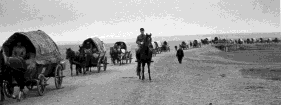Remmick-Hubert Web Site - Borodino / Bessarabia, S. Russia: A brief history of Borodino from 1814 to 1940
Last Update 7 March 2014
Borodino Bessarabia Home Site Page 4


Deportation of German-Russians from Borodino to Germany
Borodino from Heimatbuch der Bessarabiandeutschen -English Translation
COMMUNITY CHRONICLES OF BESSARABIA, 1848 -English Translation
Borodino.Bess.Genealogy Web Site - Lists Colonists Genealogy 1814 to 1940 plus Des.
Christina, nee Schweikert, Hein Remembers -English Translation
Memories of Borodino Bess. by Regine, nee Hess, Hein as told to Flossie Libra
List of Borodinoians Deported in 1940
Migration List of Borodinoians, In and Outside of Russia After 1814
Borodino, A List of Historical Dates from Pre Roman Times to 1991
List of Photogaphs of Borodino
A Time to Remember by Allyn Brosz
Bessarabian History Home Site Index Page
Before 1812
Soak Creek - A Turkish Village in Bessarabia, Moldavia before it became a German colony known as Borodino
Location is south of the Bessarabian capital of Kischnev and north of the Black Sea and west of the sea port city of Odessa
1812
Russian troops took control of area around Soak Creek
16 May 1812 Treaty of Bucharest signed which separated Bessarabia from the Turkish Moldavia and Walachia
Turkish villagers were removed in 1812 by Russian troops
German emigrants discovered Soak Creek
1814
100 German emigrant families, who were mostly Lutherans, migrated to Russia under the leadership of Herr Krueger and sought possession of land which included the village of Soak in Bessarabia that the Russians had assigned them.
There were a number of women who's husbands were still fighting in the Tsar's Army against Napoleon who had taken control of German states in 1806-7 or were widows.
Germans who arrived found the village was still inhabitated by the Moldavian families, who had returned. The Moldavians were given 3 months to leave. Meanwhile, Germans were provided with living quarters in other villages. Report tells us it was 13 weeks before they reentered Soak. (Day and months are not given in report.)
Those who did not want to live in the Moldavian empty dwellings constructed huts of wickerwork from the nearby marshes and used clay for plaster. These poor dwellings were to be their winter shelters of that year.
1815
15 families arrived to join the 100 plus. The plus were the children born in the village.
The huts were replaced with a foundation and adobe brick with thatched roofs and this improved their living quarters.
Advanced loans provided by the Russian government gave the 117 colonists an allowance that paid for "a yoke of oxen", "a cow", "some farm equipment", "seed-grain". Thosse who had the funds purchassed horses and wagons.
Village renamed Alexander after Tsar Alexander I
Village, again, renamed and called Borodino after the famous Battle of Borodino of 1812 fought between the Russians and Napoleon in 1812.before Napolton entered Moscow as the Russian army retreated. One should no confuse the Borodino near Moscow with our Borodino in Bessarabia.
1817
Another wave of German emigrants settle in Borodino in 1817 and were known as the Seventeeners, according to my grandmother, Christina, nee Schweikert, Hein, who said that as children they used to tease the "Seventeeners" as being the "late comers".
1824
1825
1827
1828
1827
1831
1833
1836
1838
1839
1845
1847
1850
Lutheran Church, which would hold 750 people, was built. It was connected to the Lutheran church in Kloetitz / Besssarabia. See picture.
1856
Village remained a German-Russian Colony from 1814 to 1856 under the Tsars of Russia
1856-1878 Congress of Berlin united Bessarabia, Moldavia and Walachia and Borodino falls under the rule of Rumania
1878
Borodino and Bessarabia were reunited with Russia
1914
Great War began against Germany
1940
Invasion of German Troops
Most German-Russians of Borodino were deported to Germany
All human rights were ignored
Picture above show some of the Heins on this forced trek to Germany
During deportation they suffered losses by attacks of planes, tanks, artillery fire from Soviet troops plus starvation and hostility from German troops
See the following linke title "Duai Exodus: A Golyo Beszedes Aramlatai" or "The Danube Exodus: The Rippling Currets of the River" http://www.danube-exodus.hu/index.php3 Chose the sectionon German Exodus [of B essarabian German-Russians from Russia].
1997
German-Russians who left Borodino in 1940 have been helping the present day villagers to rebuild Borodino and have completed a museum in memory of their ancestors
No German-Russian families of orginal German colonists presently live in Borodino, Rebublic of Ukraine....
More Dates to See - A List of Historical Dates from Pre Roman Times to 1991
Transportation: Up to WW I, the roads through and around Borodino were not paved. Otterstaetter's report [translated by google] on Borodino, page 1, gives us the following description: "They were all-including the village streets-unpaved. This meant that in late autumn, in winter, were impassable if they were not frozen, and in early spring. In those years... were passageways and the steets of village so muddy that the traffic, only with two wheel tractors (horse cart) or on horsebak was possible. In summer, the dust was 5 to 10 inches thick on the street." His web site can be found at: http://www.otterstaetter.de/home

Borodino.Bess.Genealogy
|
Hein Genealogy |
Borodino/Bess.Site |
Hubert |
Schweikert Genealogy |